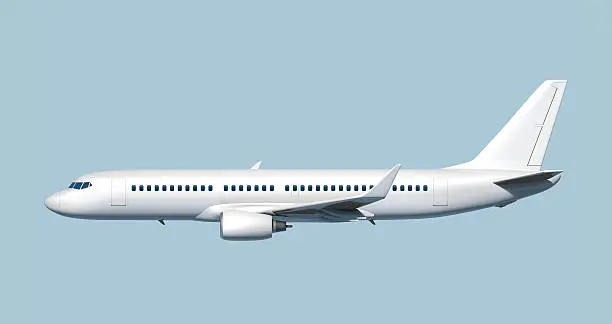Perhaps you have wondered why airplanes are predominantly white. It’s not just a coincidence. This seemingly simple design choice turns out to be a practical decision with several benefits for airlines.
Here are five reasons why most airplanes take to the skies clad in white:
Reasons for airplanes painted white
Heat Regulation
Airplanes endure extreme temperature variations during flight, from the freezing cold of high altitudes to the scorching heat of ground operations.
White paint excels at reflecting sunlight, thus minimizing heat absorption and reducing the strain on the aircraft’s structure and systems.
This reflective property helps in maintaining a comfortable cabin temperature for passengers and protects sensitive equipment from overheating, ultimately enhancing safety and efficiency.
Weight Savings
Every extra pound on an aircraft translates to increased fuel consumption and operational costs. White paint, being lighter compared to other colors, contributes to weight savings, albeit marginally. However, when multiplied across entire fleets and thousands of flights, this seemingly minor difference can result in substantial fuel savings and reduced environmental impact over time, making it an economically and ecologically sound choice for airlines.
Visibility and Safety
In the vastness of the sky, visibility is paramount for flight safety, both in the air and on the ground. White planes offer superior visibility against various backdrops, including clouds, blue sky, or urban landscapes, making them easier to spot from a distance.
This enhanced visibility aids air traffic controllers, pilots, and ground crew in maintaining safe distances, guiding takeoffs and landings, and conducting efficient ground operations, thus reducing the risk of accidents and improving overall aviation safety.
Maintenance and Repair
White paint simplifies maintenance and repair tasks for aircraft operators.
Unlike darker colors, which tend to fade and require frequent touch-ups to maintain their appearance, white paint is more forgiving and conceals minor blemishes and imperfections.
Additionally, white surfaces facilitate inspections for cracks, corrosion, or other structural issues, as defects are more visible against the contrasting background. This ease of maintenance translates to reduced downtime and lower maintenance costs for airlines, ensuring smoother operations and better reliability.
Branding and Resale Value
While the practical benefits of white paint are undeniable, there’s also a strategic aspect to its prevalence in aviation – branding and resale value.
White serves as a neutral canvas that allows airlines to apply their logos, colors, and branding elements prominently, ensuring brand visibility and recognition worldwide.
Moreover, white planes are more attractive to potential buyers in the secondary market, as they offer greater flexibility for rebranding and customization, thus retaining their resale value better than planes with complex or outdated paint schemes.







